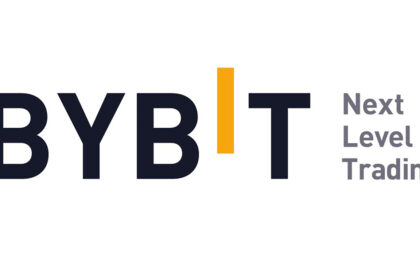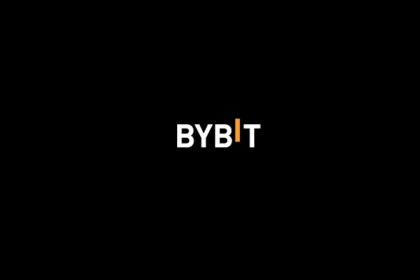Welcome to the world of cryptocurrency. It is an exciting place, full of innovation and opportunity. It is also famous for one other thing: extreme price volatility.
Anyone who has held crypto for more than a week knows the feeling. One day, your portfolio is worth a fortune. The next day, it might be down 20%. This “rollercoaster” is stressful. It makes it difficult to plan for the future. What if you want to protect your gains? What if you are worried about a sudden crash (a “bear market”) but you do not want to sell your coins?
This is where “hedging” comes in. This guide will explain, in simple terms, how to hedge crypto with futures. This is a powerful strategy used by professional traders, miners, and long-term holders to manage risk. And it is a tool you can learn to use, too.
What is hedging? (The “insurance policy”)
Hedging is a simple concept. Hedging is a strategy to reduce your risk of losing money. Think of it like buying insurance for your portfolio.
When you buy car insurance, you pay a small fee (your premium). If you get into an accident, the insurance company pays for the damage. You paid a small, known cost to protect yourself from a large, unknown loss. You are “hedged” against an accident.
Hedging in finance works the same way. You create a second position that is designed to make money if your main position loses money. The goal is for the two positions to cancel each other out. This locks in your portfolio’s value.
A key point: Hedging is not designed to make you more money. It is designed to make you lose less money. It is a defensive strategy. You trade potential *future gains* for *current safety*. When you hedge, you are choosing stability over high-risk, high-reward gambling.
What is a futures contract? (The “tool” for hedging)
To hedge, you need a special tool. In crypto, the most common tool is a futures contract.
A futures contract is simply an agreement to buy or sell an asset at a specific price on a specific date in the future. That’s it. It is a “future” deal.
Imagine you want to buy a specific car. The dealer says it will take 3 months to arrive. You sign a contract today to buy that car for $30,000 in 3 months. You have entered a futures contract. If the car’s price jumps to $35,000 in that time, it doesn’t matter. You still get it for $30,000. You “locked in” your price.
Key futures terms (explained simply)
To use futures, you must know the language. The world of derivatives can seem complex, but the core ideas are straightforward. Let’s break them down.
- Spot Market: This is the “normal” crypto market. You buy 1 Bitcoin, you get 1 Bitcoin. The transaction happens *on the spot*.
- Derivatives Market: This is where futures are traded. You are not trading the coins themselves. You are trading contracts based on the coin’s price.
- Long Position: This is what you do if you think the price will go UP. You “go long” or “buy” a futures contract. You are agreeing to *buy* the asset in the future.
- Short Position: This is what you do if you think the price will go DOWN. You “go short” or “sell” a futures contract. You are agreeing to *sell* the asset in the future. This is the key to hedging.
The two types of crypto futures
There are two main types of futures contracts you will see on exchanges like Bybit:
-
- Traditional (Expiry) Futures: These have an expiry date, just like the name suggests. For example, a “BTC-December” contract will expire on a specific day in December. At expiry, the contract is settled. These are predictable but less flexible.
- Perpetual Futures (Perps): These are the most popular in crypto. A perpetual contract has no expiry date. You can hold it for as long as you want (one hour, one day, one year). To keep the contract’s price close to the “real” spot price, a “funding rate” is paid between traders.
The magic and danger: Leverage and margin
This is the most important concept to understand. Futures allow you to use leverage.
Leverage means you control a large position with a small amount of your own money. The exchange “lends” you the rest. For example, with 10x leverage, you can control a $10,000 position with only $1,000 of your own money.
Your $1,000 is called margin. It is your “collateral” or “good faith” deposit. It’s the money you risk losing.
-
-
- The Good: Leverage can multiply your profits. If you are right, you make 10x the profit.
- The Bad: Leverage can multiply your losses. If you are wrong, you can lose your entire margin very quickly.
-
If the price moves against you by a certain amount (e.g., 10% on a 10x leveraged position), your loss equals your entire margin. The exchange will automatically close your position and take your margin. This is called liquidation. Your position is gone. Your margin is gone. This is a critical risk you must manage.
| Term | Simple Explanation |
|---|---|
| Long | You bet the price will go UP. |
| Short | You bet the price will go DOWN. (This is used for hedging). |
| Leverage | Borrowing power from the exchange to control a big position with little money. |
| Margin | Your own money put up as collateral for a leveraged position. |
| Liquidation | The exchange force-closes your position and you lose your margin. (This is very bad!). |
| Perpetual (Perp) | A futures contract that never expires. |
The core strategy: How to hedge crypto with futures
Now we can put all the pieces together. The strategy is called a “short hedge”.
The goal is to protect the US Dollar (USD) value of your crypto holdings. You will use a futures position as your “insurance” policy.
The problem: A real-world example
-
-
- ► You are a smart investor. You own 1 Bitcoin (BTC).
- ► The current price of 1 BTC is $60,000.
- ► So, your portfolio is worth $60,000.
- ► You are happy, but you are also worried. You read news about a possible crash. You think the price might drop to $40,000.
-
What are your options?
-
-
- Do nothing: You “HODL” and hope for the best. If the price crashes to $40,000, your portfolio is now worth $40,000. You lost $20,000.
- Sell your BTC: You sell your 1 BTC for $60,000. Now you are safe. You have $60,000 in cash.
- Downside 1: You might have to pay taxes on your $60,000 (capital gains tax).
- Downside 2: What if you were wrong and the price pumps to $80,000? You sold your Bitcoin. You missed the rally. You are left with $60,000 while you could have had $80,000.
- Option 3: HEDGE!
-
The solution: The “short hedge”
Instead of selling your Bitcoin, you keep it. You will use the futures market to protect its value. Here is how to hedge crypto with futures, step-by-step.
You decide to hedge your entire 1 BTC position.
-
-
- You go to a derivatives exchange (like Bybit).
- You find the BTC/USD perpetual futures contract.
- You open a SHORT position.
- The size of your position should be equal to your spot holding: $60,000 worth of BTC futures.
-
Now, you have two positions:
1. Your Spot Position: LONG 1 BTC (worth $60,000).
2. Your Futures Position: SHORT 1 BTC (worth $60,000).
You are now “fully hedged”. Your net position is zero. Let’s see what happens when the price moves.
Scenario 1: The price crashes! (Your hedge works)
You were right. The market crashes. The price of 1 BTC drops from $60,000 to $40,000.
-
-
- Your 1 Spot BTC: Was worth $60,000. It is now worth $40,000.
► You have a paper loss of -$20,000 on your spot holding.
- Your Futures Short: You shorted (agreed to sell) at $60,000. The price is now $40,000. You can “buy it back” (close the short) for a massive profit.
► You have a profit of +$20,000 on your futures position.
- Your 1 Spot BTC: Was worth $60,000. It is now worth $40,000.
-
Total Result:
( -$20,000 from Spot ) + ( +$20,000 from Futures ) = $0 change.
Your 1 BTC is worth $40,000, but you have $20,000 in cash profit from your hedge. Your total portfolio value is still $60,000. You are perfectly protected.
Scenario 2: The price rises! (The “cost” of hedging)
You were wrong. The market rallies. The price of 1 BTC rises from $60,000 to $70,000.
-
-
- Your 1 Spot BTC: Was worth $60,000. It is now worth $70,000.
► You have a paper gain of +$10,000 on your spot holding.
- Your Futures Short: You shorted (agreed to sell) at $60,000. The price is now $70,000. You must “buy it back” at a higher price to close your position.
► You have a loss of -$10,000 on your futures position.
- Your 1 Spot BTC: Was worth $60,000. It is now worth $70,000.
-
Total Result:
( +$10,000 from Spot ) + ( -$10,000 from Futures ) = $0 change.
Your 1 BTC is worth $70,000, but you lost $10,000 on your hedge. Your total portfolio value is still $60,000.
In this scenario, you “missed out” on $10,000 of profit. This is the cost of your insurance policy. You paid for protection you didn’t end up needing. This is a normal and expected part of hedging. You cannot be protected from loss *and* participate in gains at the same time.
Ready to Start Hedging?
Bybit is a world-class platform, perfect for learning how to hedge crypto with futures. With high liquidity and advanced tools, you can protect your portfolio with ease.
Use our exclusive referral codes for massive bonuses! Get up to $30,000 in deposit rewards and reduced trading fees.
- Bybit Global (Rest of World):
BYBIT31 - Bybit EU (Europe):
BYBIT3K
The biggest risk: Liquidation
The “perfect hedge” example above assumes one thing: you don’t get liquidated.
Remember Scenario 2, where the price went UP? Your short position was losing money. To keep that position open, you must have enough margin (collateral) in your account.
This is where beginners make a fatal mistake. They try to hedge, but they use high leverage (like 20x, 50x, or 100x).
Example of a failed hedge:
-
-
- ► You have 1 BTC (worth $60,000).
- ► You short $60,000 of BTC futures using 50x leverage.
- ► This means your margin (your own money) for this position is only $1,200 ($60,000 / 50).
- ► The price of BTC ticks up just 2% (from $60,000 to $61,200).
- ► Your loss on the short position is 2% of $60,000, which is… $1,200.
- ► YOU ARE LIQUIDATED. The exchange takes your $1,200 margin and force-closes your short position.
-
What happens next? Your hedge is gone. You are no longer protected. If the price now crashes down to $40,000, you are not hedged. You will feel the full -$20,000 loss on your spot BTC, *plus* you lost your $1,200 margin.
This is the worst possible outcome. You tried to be safe, but you were greedy with leverage, and it backfired.
Tip: The Golden Rule of Hedging
When hedging, USE LOW LEVERAGE.
Using 1x, 2x, or 3x leverage is the smart way to hedge. Using 1x leverage means you are “fully collateralized”. It is almost impossible to be liquidated. Using 2x or 3x leverage gives you a *massive* buffer before liquidation.
High leverage is for gambling. Low leverage is for hedging. Do not confuse the two. This is the most important lesson in how to hedge crypto with futures.
The costs of hedging
Hedging is not free. Like an insurance premium, there are small costs. It is important to know them.
1. Trading fees
Every time you open or close a futures position, you pay a small “maker” or “taker” fee. These are usually very small (e.g., 0.02% to 0.06%), but they add up. (Note: Using a referral code like BYBIT31 or BYBIT3K can give you fee discounts!)
2. Funding rates (for perpetual futures)
This is the most significant cost. Remember, perpetual futures never expire. The “funding rate” is a mechanism to keep the futures price in line with the spot price. It is a small fee paid every 8 hours (on most exchanges).
-
-
- When the market is bullish (prices are rising): Most people are “long”. The funding rate is *positive*. LONGS pay SHORTS.
► If you are short (hedging), you will RECEIVE money! This is a “positive carry.” Your hedge is actually *paying you* to keep it open. This is a fantastic situation.
- When the market is bearish (prices are falling): Most people are “short”. The funding rate is *negative*. SHORTS pay LONGS.
► If you are short (hedging), you will PAY the fee. This is the “cost” of your insurance. You must pay this small fee every 8 hours to maintain your protection.
- When the market is bullish (prices are rising): Most people are “long”. The funding rate is *positive*. LONGS pay SHORTS.
-
You must factor this cost into your plan. If you hold a hedge for months during a bearish period, the funding fees can become expensive. This is a key part of how to hedge crypto with futures.
Advanced hedging concepts
Once you master the basic short hedge, you can explore more advanced ideas. These are concepts that professional traders use every day.
What is “Basis”? (Contango and Backwardation)
“Basis” is the simple difference between the futures price and the spot price.
Basis = Futures Price - Spot Price
-
-
- Contango: This is when the futures price is higher than the spot price. (e.g., Spot BTC = $60,000, Futures BTC = $60,500). This is a “normal” bullish market. People are willing to pay a premium to buy in the future.
- Backwardation: This is when the futures price is lower than the spot price. (e.g., Spot BTC = $60,000, Futures BTC = $59,500). This is rare and signals a very “bearish” market. People are desperate to sell now.
-
Why does this matter? It leads to a strategy called the “cash and carry” trade.
The “cash and carry” trade (Arbitrage)
This is a market-neutral strategy that lets you profit from “contango.” It is a type of hedge.
When you see a market in strong contango (futures price > spot price):
-
-
- You BUY 1 BTC on the spot market (for $60,000).
- You simultaneously SHORT 1 BTC on a futures contract (e.g., a 3-month expiry) for $61,000.
- You hold both positions until the expiry date.
-
What happens? At expiry, the futures price and spot price must become the same. It doesn’t matter if the price is $40,000 or $80,000. You close both positions. You bought at $60,000 and you sold at $61,000. You have locked in a risk-free $1,000 profit (minus fees). This is how hedge funds make stable, low-risk returns.
Cross-hedging
What if you own an altcoin (e.g., “AwesomeCoin”) that has no futures market? You can still hedge it. This is called cross-hedging.
You hedge by shorting a *correlated* asset. Since most altcoins follow Bitcoin, you could hold your AwesomeCoin and short BTC futures. If the whole market crashes, your BTC short will make money, offsetting *some* of the loss on your altcoin.
Risk: This is not a perfect hedge. The correlation could break. AwesomeCoin could crash while BTC stays flat. Your hedge would not work. This is an advanced and risky strategy.
Protect Your Portfolio with Bybit
Don’t just watch the market fall. Take control with Bybit’s powerful hedging tools. Secure your crypto value against volatility today.
Sign up with our referral codes to claim your welcome bonus. This is the best way to start your hedging journey!
- Global Code (BYBIT31): Click to apply!
- EU Code (BYBIT3K): Click to apply!
Who should (and shouldn’t) hedge?
Hedging is a powerful tool, but it is not for everyone. It requires active management and a clear understanding of the risks. This is a major part of how to hedge crypto with futures.
Good candidates for hedging:
-
-
- Long-Term Holders (“HODLers”): People who believe in crypto for the next 10 years, but expect a bad 6-month bear market. They can hedge to protect their value without selling the coins they love.
- Miners: Miners have constant real-world expenses (electricity, hardware). They cannot risk a price crash. They use short futures to lock in a profitable price for the crypto they are mining.
- Crypto Businesses: Any business that gets paid in crypto but has bills to pay in USD. They must hedge to ensure they can make payroll, regardless of what the market does.
- Investors with large positions: If a large part of your net worth is in crypto, it is simply responsible to hedge a portion of it to protect your wealth.
-
Who should be careful?
-
-
- Absolute Beginners: If you are brand new to crypto, do not jump into futures. You will almost certainly get liquidated. Learn about spot, “HODLing”, and market cycles first.
- Gamblers: If you are looking for 100x gains, hedging is not for you. Hedging is the *opposite* of gambling. It is about removing risk, not adding it.
- People who cannot manage risk: If you know you will use 50x leverage “just to see what happens,” you should stay away from futures. You will lose your money.
-
Sleep Soundly with a Hedged Portfolio
Stop worrying about market crashes. A well-managed hedge on Bybit can give you peace of mind, knowing your capital is protected.
Join the smart money and use our referral codes for the best start. Get bonus rewards and fee discounts on the best hedging platform.
- Bybit Global Referral Code:
BYBIT31 - Bybit EU Referral Code:
BYBIT3K
Conclusion: A tool, not a magic wand
We have covered a lot. At its core, how to hedge crypto with futures is about one thing: control. It is about taking control of your risk in a market that is famous for being out of control.
A “short hedge” allows you to keep your long-term crypto holdings while protecting their short-term dollar value. It is the financial equivalent of “having your cake and eating it too,”… but for a small price.
That price is the “cost of insurance”: you miss out on sudden rallies, and you might have to pay funding fees. And it all comes with the critical risk of liquidation, which you MUST manage by using low leverage.
This is not a “set it and forget it” strategy. You must monitor your hedge. But it is one of the most powerful tools a serious crypto investor can learn. It separates the amateurs from the professionals.
By understanding this strategy, you are taking a massive step forward in your financial education. And with platforms like Bybit making these tools accessible, you have the power to build a more resilient and secure crypto portfolio.
Don’t Get Caught in the Next Crash!
The market is unpredictable. Your strategy shouldn’t be. Learn to hedge on Bybit, the top-tier exchange for derivatives and risk management.
Use our codes for a welcome bonus. Global users: BYBIT31. European users: BYBIT3K. Get your deposit bonus and start protecting your assets today.
Frequently Asked Questions (FAQ)






















